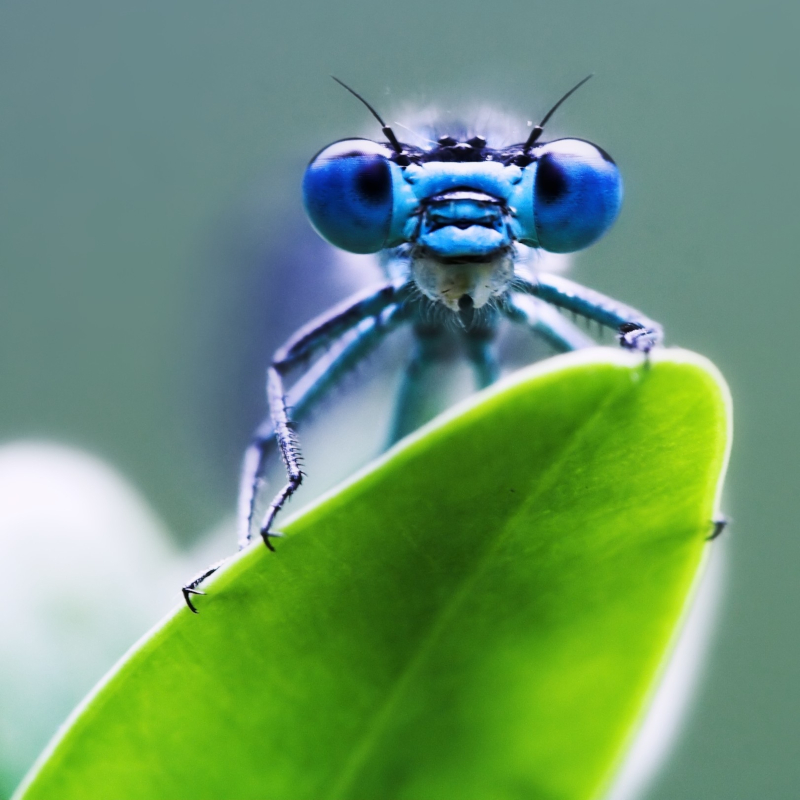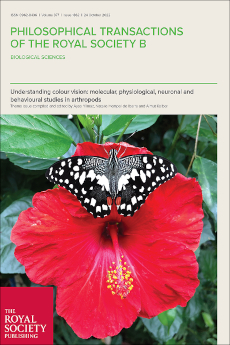Dr Ayse Yilmaz, guest editor of the latest Philosophical Transactions B issue, tells us about the background and content of this new theme issue.

The latest issue of Philosophical Transactions B is on ‘Understanding colour vision: molecular, physiological, neuronal and behavioural studies in arthropods'. Guest Editor Dr Ayse Yilmaz-Heusinger (Lund University) tells us how this issue came about, and how studying vision in arthropods (e.g. insects, crustaceans and spiders) can provide exciting insights into the world around us.
Tell us about the idea behind this theme issue and how it came about.
I remember getting excited when I received an email from Royal Society Publishing two years ago with the tempting subject line "Would you like to be Guest Editor for the world's longest-running science journal?". I investigate insect colour vision using behavioural, neuronal and molecular approaches, and immediately thought a theme issue on animal colour vision would be great and rather timely given various recent advances in our understanding of arthropod vision. I contacted Almut Kelber, one of the lead scientists in colour vision with expertise in comparative colour vision and physiology of both vertebrates and invertebrates, asking her to come on board of this exciting project. On the way, we recruited another amazing scientist, Natalie Hempel de Ibarra, from the University of Exeter (UK), covering expertise in bee colour vision and insect behaviour.
We all wanted to create a theme issue that would cover a broad range of colour vision research in arthropods, from the diversity of receptors and underlying neural circuits to the role of colour vision in behaviour, ecology, and evolution, and comparing it to the colour vision systems of other well-studied animal groups, such as mammals or birds. We were particularly passionate about highlighting a range of new emerging questions and innovative approaches, outlining essential knowledge gaps that remain and pointing the way to future research areas. A themed issue that brings together all the various current issues in this field is particularly unique, as it highlights and compares colour vision research across diverse arthropod taxa in a common forum.
What do you think is the most exciting idea discussed in the papers?
It is tough to choose one as we got equally excited with each of the papers and the ideas they explore. This includes the review papers where the readers can find out a historical track record in research of arthropod colour vision, where authors also covered the advances in methods, emerging questions, promising approaches and critical knowledge gaps. Historically, most colour vision research is carried out in insects, and fewer researchers work on other arthropod groups. We, therefore, made an effort to have those areas appropriately represented. We are happy that we could cover the insect groups that have not been the main focus of colour vision studies and all non-insect groups in which key advances in colour vision have been made. For example, Mike Bok and his colleagues showed that despite being very tiny (≈ 1 mm in length), thrips (slender insects) seem to have a number of regionalised specialisations in their eyes, giving them dynamic visual capabilities, including special filters that could potentially allow them to see UV-B light, something that is very rare in nature. This has only been demonstrated in a few animal species. In another example, Gregor Belusic, Kentaro Arikawa and his colleagues revealed remarkable evolutionary flexibility of lepidopteran eyes with a toolkit for red colour vision which is probably switched on and off in the visual system on demand.
Did you learn anything new when editing the papers?
Definitely! Guest editing a special issue is an incredible learning experience. Almut and Natalie have long-standing experience as editors, which was not the case for me! Throughout the project, I gained a lot of knowledge on the details of the editorial processes. As an early-career researcher I felt this was a fantastic experience which also expanded my academic knowledge about cutting-edge findings and novel approaches in the field.

How was your experience of being a Guest Editor on Phil Trans B? As an early career researcher did you find it particularly challenging or rewarding?
Amazing! It is not only because I gained editorial experience and expanded my knowledge with ongoing research in the field but also because compiling and editing papers from different areas is an intellectual challenge forcing you to think creatively when interacting with the most intelligent and skilled scientists in the field. It is an achievement for me and for my career to lead a special issue in Phil Trans B and to successfully see it through. As a young scientist preparing to set up my own lab, I also think being an editor in Phil Trans B is an acknowledgement of someone's expertise within a particular area, which I believe and hope is a great way to boost our career outside of the lab.
It was a fantastic experience to work with the expert and experienced editorial team of Phil Trans B. We are incredibly grateful to Helen Eaton for her effort, care and guidance during the process. I also want to thank all researchers and reviewers on behalf of Almut and Natalie for their fantastic contribution to the issue, working enthusiastically despite enormous pandemic-related challenges.
Tell us a bit about your own research.
I am a postdoctoral researcher at Lund University, working with amazing people in Marie Dacke’s Lab in the Vision Group. My research focuses on analyzing visual sensory capabilities of dung beetles and ants with a specific interest in understanding the physical and neural principles that encode visual signals to produce reliable output for different navigational purposes. In one of my recent works, which is part of the special issue, I combined behavioral experiments with a spectral sensitivity analysis of the photoreceptors and show that the beetles sensitive to UV and green range of the electromagnetic spectrum primarily orient to the apparent brightness differences perceived by their green photoreceptors but that, under certain wavelength combinations, they also take spectral information into account. With these results we show that they most likely rely on a primitive color vision orientation system (rather than true color vision) for the extraction of directional information from the celestial spectral gradient. Our rigorous investigation of how dung beetles extract directional information from the celestial spectral gradient to support straight-line orientation is important to understand the fundamental mechanisms of spectral orientation in other animals having different navigational purposes, as well.

Image by Christian Trick from Pixabay.
Read the theme issue 'Understanding colour vision: molecular, physiological, neuronal and behavioural studies in arthropods'.
To read more content from Philosophical Transactions B, or to find out how you can become a Guest Editor for the journal, please visit our website.





